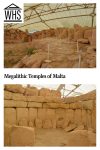Megalithic Temples of Malta
by Tamar Marder
What are the Megalithic Temples of Malta?
This UNESCO site comprises seven prehistoric structures found in Malta, an archipelago of islands in the Mediterranean. The monuments date back to the 4th and 3rd millennia BCE, making them some of the oldest free-standing structures in the world.
Disclosure: This article contains affiliate links. Making a purchase through an affiliate link will mean a small commission for this website. This will not affect your price.
The seven temples that make up this UNESCO site are scattered across the islands of Malta and Gozo. Five of the seven – Skorba, Ta’ Ħaġrat, Ħaġar Qim, Mnajdra, and Tarxien – are on the island of Malta. The two temples of Ġgantija are located on the island of Gozo.
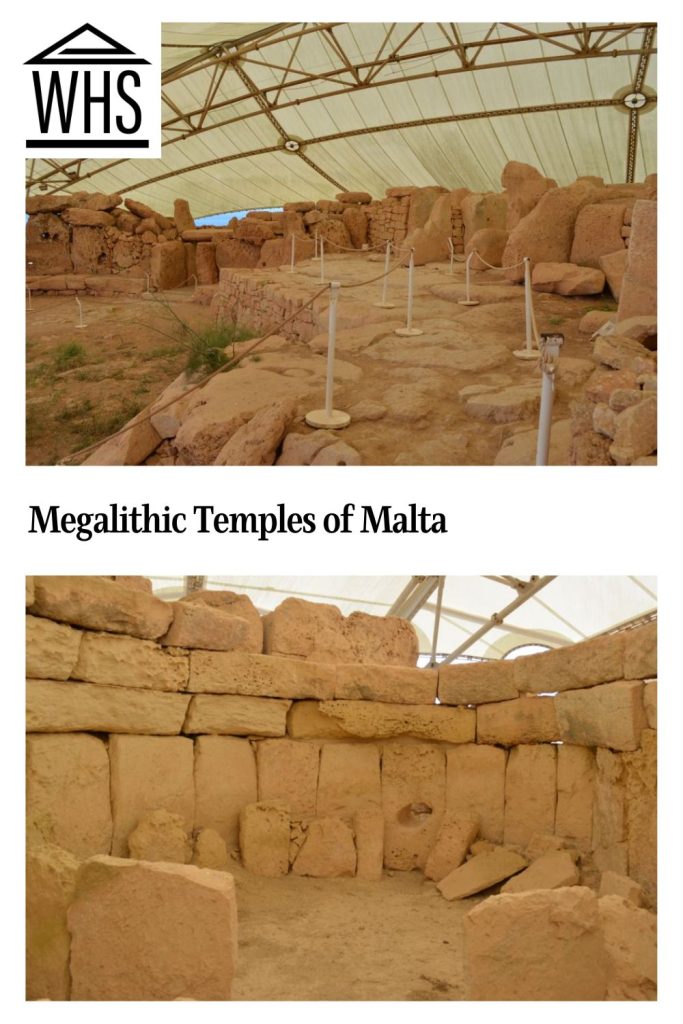
While we still know little about the prehistoric civilizations that built these magnificent structures, evidence found in the temples suggests they were used for ritual purposes. Evidence of fires suggests burnt offerings. Other artifacts found during excavations, such as figurines, as well as plant and animal motifs carved along the walls, further suggest the use of these structures for ritual purposes.
Why are the Megalithic Temples of Malta a UNESCO World Heritage site?
The first of these incredible structures, the Ġgantija temples of Gozo, were added to the UNESCO World Heritage Site list in 1980. In 1992, the list was expanded to include five other megalithic temples on the island of Malta.
In addition to being some of the oldest free-standing structures in the world, they are notable for their structural complexity. According to the official UNESCO website, “The Megalithic Temples of Malta are remarkable not only because of their originality, complexity and striking massive proportions but also because of the considerable technical skill required in their construction.”
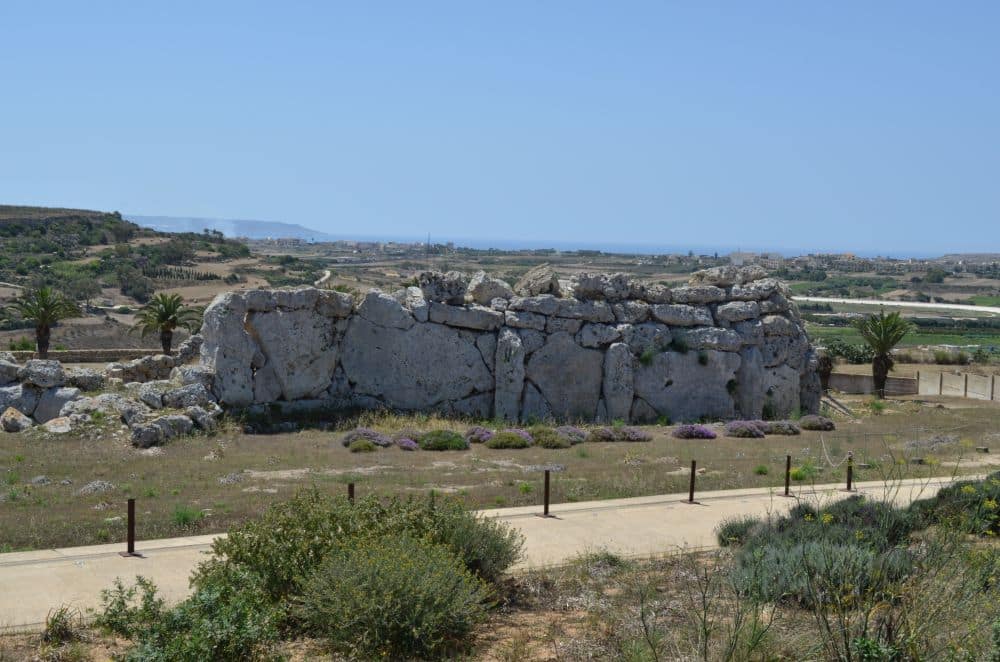
These Bronze Age structures suggest a high level of craftsmanship, attesting to the knowledge and skills of the people who built them. Additionally, the temples exhibit different phases of construction, with later Bronze Age structures built atop those of the early Neolithic Period. This repurposing attests to the cultural evolution of prehistoric society on the islands.
What can you expect on a visit to the Megalithic Temples of Malta?
If you visit all seven megalithic temples, expect a lot of similarities and a few key differences. The structures all contain unique layouts, yet there are some consistent features found across structures.
Entrances to the temples curve inwards, creating a concave building face. The interior facades consist of large, upright stone slabs topped with horizontal blocks. In some of the temples there are designs carved into the walls, often spirals or a series of holes drilled into the rocks.
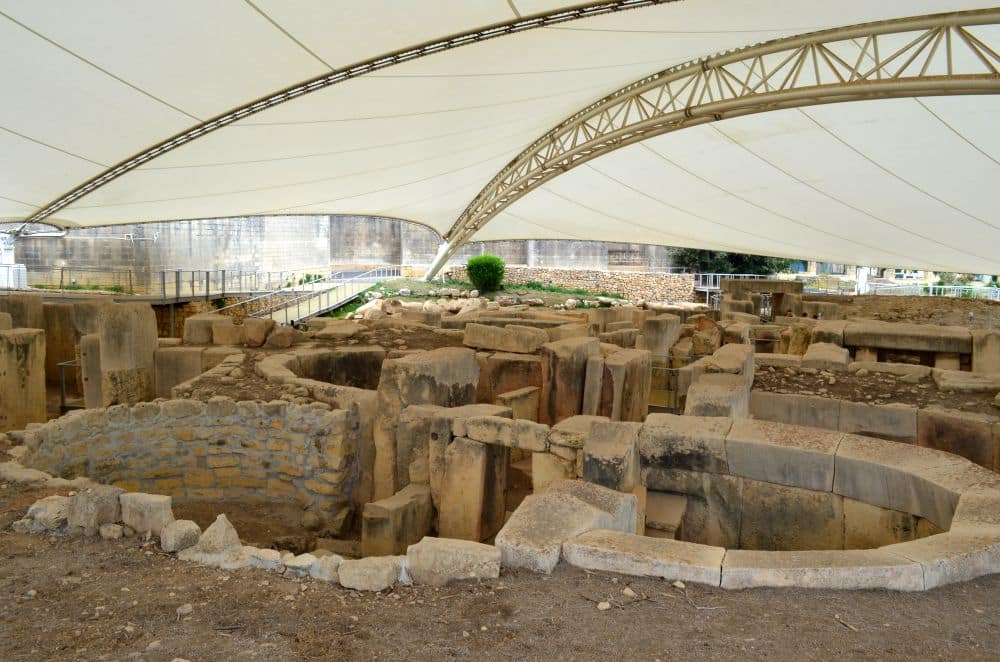
At some sites, such as at the Tarxien Temples, large rocks and the remains of statues have been removed and replaced with replicas. In fact, none of the artifacts unearthed in the temples can be found onsite. To see these relics, I recommend visiting the National Museum of Archaeology in Valletta. This museum, paired with visiting the Megalithic Temples, will give you a more well-rounded understanding of these structures.
This full-day private guided tour includes three of the temples and several other sights.
Are these megalithic temples worth visiting?
The Megalithic Temples of Malta are only worth visiting if you are interested in prehistoric structures.
If you compare the archaeological ruins between Malta and Sicily, Malta’s closest neighbor, the Megalithic Temples are not grand like the ancient Greek and Roman ruins of Sicily like Villa Romana del Casale or the Greek ruins at Agrigento or Syracuse. I found they required a bit more imagination to visualize how these structures may have looked. Travelers with a keen interest of history, specifically prehistoric human societies and the Bronze Age, should visit the temples.
The Megalithic Temples are some of the top sights in Malta, so if you’re coming to the country you’d be remiss if you didn’t visit at least one of them. That being said, one temple may be enough for most visitors (they are quite similar, after all). My recommendation would be to visit the Ġgantija temples on the island of Gozo as they are some of the largest and best preserved.
This full-day group tour goes from Malta to Gozo to see the Ggantija temples.
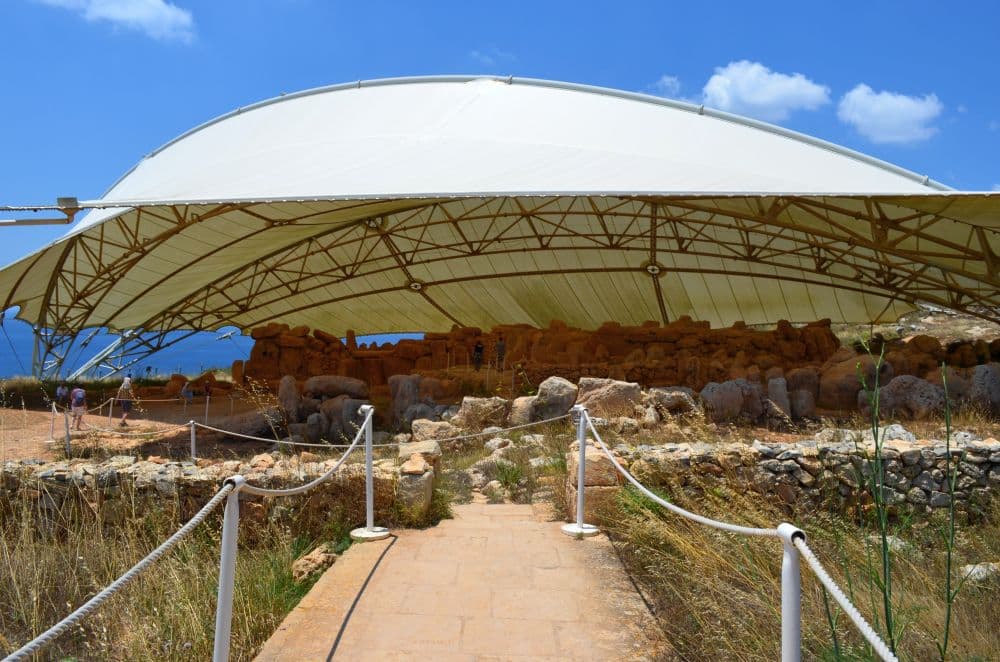
The temples of Ħaġar Qim and Mnajdra are also a top choice. These two temples, located within close proximity to each other and visited on the same ticket, are situated in a scenic spot overlooking the Mediterranean. There is also an extensive onsite museum that helps provide much-needed context for visitors.
This half-day group tour includes Ħaġar Qim and Mnajdra.
Tips for visiting the Megalithic Temples of Malta
Malta has a dry and arid climate and gets hot in the summer months. While most of the temples are covered for preservation purposes, they are located in exposed areas. Many of the temples, especially Ġgantija and the Ħaġar Qim and Mnajdra complex, require visitors to walk moderate distances and uphill to reach sights. Prepare yourself for the sun exposure and heat by bringing water, wearing a hat, and applying sunscreen.
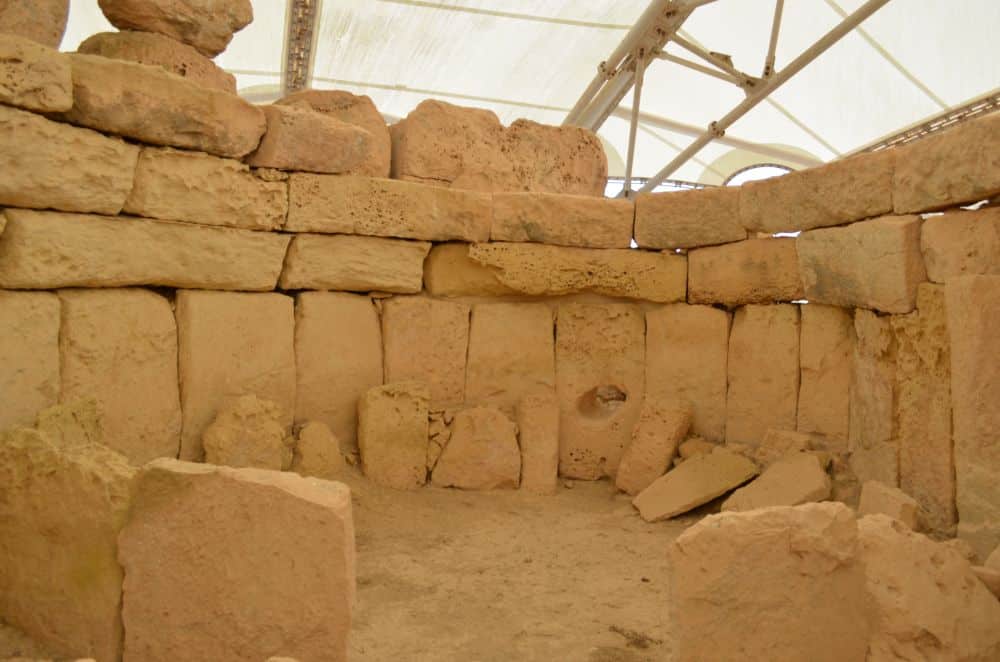
After visiting the Megalithic Temples, I highly recommend you make time to visit the National Museum of Archaeology in Valletta. This extensive museum contains the majority of artifacts unearthed during temple excavations and also has reproductions of the temple layouts. The museum will help provide context for your visit to the temples, where there is often little guidance or explanation. To make the most of your trip to this UNESCO site, be sure to include the museum in your itinerary.
Plan in advance. Many of the temples are located within close proximity to each other. If you plan your time well, you can cluster certain temples together to minimize travel time between sights. Below, I’ve provided recommendations for which temples can be easily paired together.
Use the map below to plan your trip. It has each temple marked on it as well as accommodations across Malta and Gozo.
Where are the Megalithic Temples of Malta?
The Megalithic Temples of Malta are scattered across the islands of Malta and Gozo. Below, I’ve listed the location of each temple and approximate driving times from Valletta.
The most efficient way to get around in Malta is by car. Compare rental car prices from Malta Airport here.
Tarxien
The Tarxien Temples are just a seven-minute drive outside The Three Cities and fifteen minutes from Valletta. There is no parking onsite, so I recommend taking a taxi from Valletta instead of driving yourself. Alternatively, multiple bus routes operate between Valletta and Tarxien. Transit times via public transit take anywhere from 17 to 25 minutes.
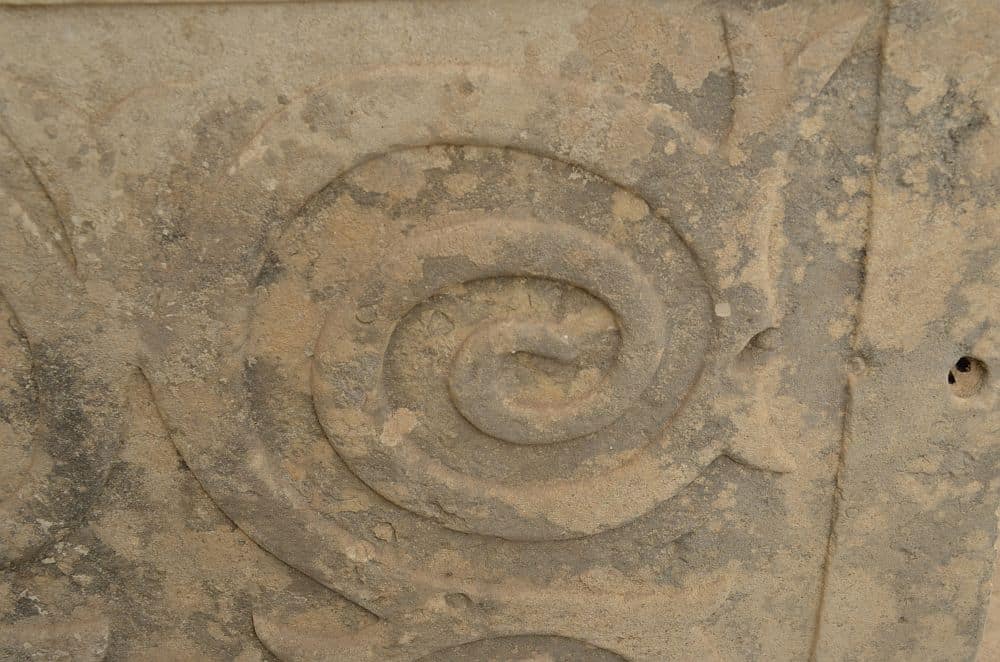
Another UNESCO site, the Ħal Saflieni Hypogeum, is an underground burial chamber from the same period as these megalithic temples. It’s not far from Valleta – which, by the way, is also a UNESCO site – and would pair well with visiting the Tarxien Temples.
Skorba
This prehistoric site is a 25-minute drive from Valletta. While there is no car park, there is street parking available nearby. Several bus routes operate between Valletta and Skorba. It takes between 45 minutes to an hour to reach Skorba via bus.
A trip to Skorba pairs well with visits to the cities of Rabat and Mdina, just 13 minutes away by car, as well as the Ta’ Ħaġrat temple.
Ta’ Ħaġrat
Located just a three-minute drive from the aforementioned temple of Skorba, this temple is 25 minutes outside the city of Valletta.
Ħaġar Qim and Mnajdra
Situated on Malta’s southern coast, these temples are within a few minutes’ walk of each other. Probably the most developed of the temple sites, visitors will view a 3D film and explore the museum before heading outside to the temples.
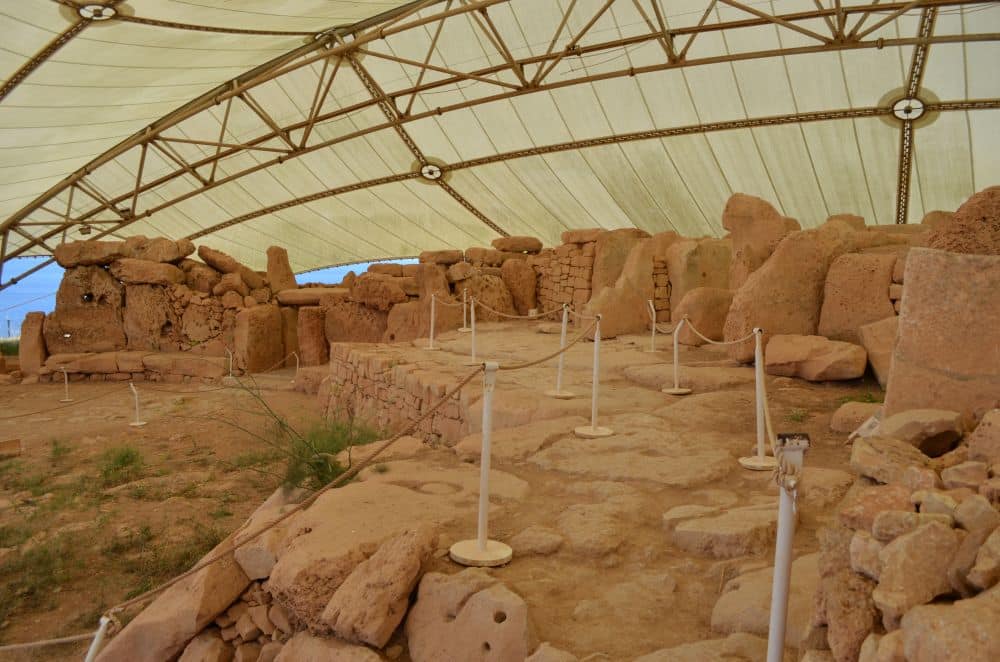
Just 25 minutes outside Valletta, the site has parking for visitors. These temples are more complicated to reach by bus as the journey requires multiple transfers and takes over an hour.
Ġgantija
These two temples are found on the island of Gozo. To get there from Valletta takes about 1.5 hours, including the ferry crossing between the islands. The nearest city to Ggantija is Victoria, a six-minute drive away.
For more information about the Megalithic Temples of Malta, their opening hours, and admission fees, see the Visit Malta website.
Have you been to the Megalithic Temples of Malta? If so, do you have any additional information or advice about this UNESCO World Heritage site? Please add your comments below!

